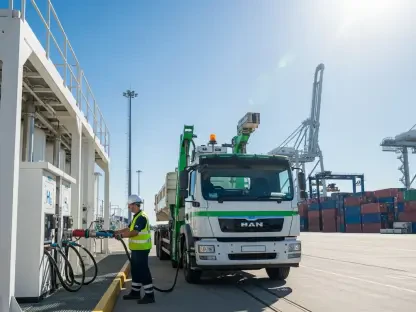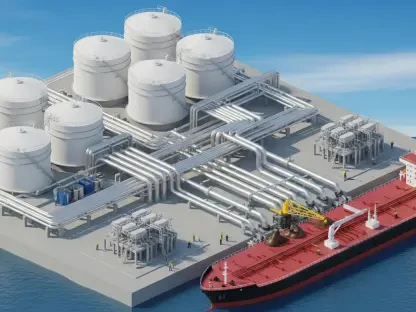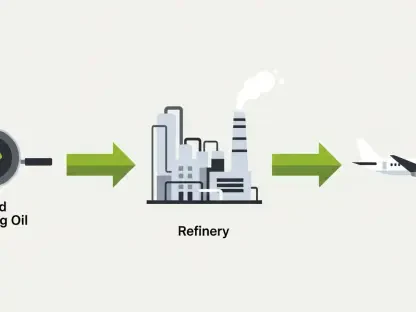In the ever-evolving world of energy markets, Saudi Arabia’s position as a leading oil exporter places it in a pivotal role, influencing global pricing strategies. We sat down with Christopher Hailstone, an esteemed expert in energy management and renewable energy, to delve into the complexities surrounding Saudi Arabia’s recent pricing strategies, their implication for Asian markets, and the broader global effects. Christopher provides keen insights into the delicate balance of supply, demand, and geopolitical factors shaping today’s energy landscape.
Can you provide us with an overview of Saudi Arabia’s recent trend in hiking oil prices for Asian buyers?
Saudi Arabia has been a dominant force in the oil markets for a long time, and lately, we’ve observed a strategy targeting heightened prices for Asian buyers. This trend reflects a response to robust demand and limited supply, especially notable as we see prices hit a five-month high. The price increase aligns with Saudi Arabia’s intention to capitalize on the growing energy needs of Asia, which remains a critical market due to its enormous energy consumption levels.
What factors have influenced Saudi Arabia to consider raising the September oil prices for the second consecutive month?
The decision to raise prices again is underpinned by several factors, including supply constraints and consistent demand, particularly in Asia. These factors come from geopolitical considerations, summer consumption needs in the Middle East, and increased refinery utilization in key consumer countries like China. By adjusting prices upward, Saudi Arabia seems to be striking a balance to compensate for these market dynamics while ensuring stable revenue.
How does the September official selling price (OSP) of Arab Light crude compare to previous months?
The September OSP for Arab Light crude is projected to rise significantly, expected to be between $3.10 and $3.25 a barrel, marking the highest level in five months. This uptick continues the trend from August, where we already saw a notable increase. It highlights the ongoing scarcity concerns combined with the capacity control strategies that Saudi Arabia is implementing as we move through the latter half of the year.
Could you walk us through the survey results predicting the rise in OSP for other crude grades like Arab Extra Light, Arab Medium, and Arab Heavy?
Survey results indicate that we’re expecting increments across various crude grades — with Arab Extra Light and Arab Medium potentially seeing increases up to 95 cents a barrel. Arab Heavy is not far behind, showing a gain likely around 85 cents. These forecasts reflect consistent demand patterns and serve to underpin Saudi Arabia’s rationale for aligning various grades to match the demand and offer a predictable price structure.
How do cash Dubai’s premium to swaps influence these forecasts? Can you provide more details on this?
The changes in cash Dubai’s premium to swaps are instrumental in shaping crude price forecasts. This month, the premium gained $1.11 a barrel, sending strong signals about regional demand and available supply constraints. This metric serves as a barometer for traders and analysts, influencing Saudi Arabia’s pricing decisions as they navigate the delicate landscape of regional supply and demand dynamics.
What were the reasons behind Saudi Arabia’s decision to raise Arab Light prices in August, and how did geopolitical events influence this decision?
In August, the decision to raise prices was deeply entwined with geopolitical tensions, notably the 12-day conflict involving Iran and Israel. This situation posed immediate risks to oil exports and elevated spot prices, affecting perceptions of stability. Saudi Arabia leveraged this environment to ensure that its pricing strategy addressed these uncertainties, thereby reinforcing its market position and focusing on security.
How has domestic consumption in the Middle East during the summer affected crude exports and spot benchmarks?
Middle Eastern domestic demand traditionally surges in the summer months due to increased cooling needs. This demand uptick reduces the volume of crude available for export, subsequently influencing spot benchmarks by creating a tighter market. Saudi Arabia has strategically managed exports to ensure that spot prices remain buoyant, reflecting this domestic consumption pattern.
In what ways has China’s demand impacted the global oil market, and how does it play into Saudi Arabia’s pricing decisions?
China’s voracious energy needs, coupled with its proactive stance in replenishing fuel stocks, have a significant bearing on the global oil scene. This increased demand has precipitated heightened refinery outputs, which curtail global supply pressure. With China as a central player, Saudi Arabia fine-tunes its pricing, making adjustments that reflect both the immediate needs and the broader implications for sustained economic relationships in the region.
What insights can you share about the forecast that suggested a lower increase in Arab Light prices, and why was it considered an outlier?
The forecast indicating a marginal rise in prices—just around 60-70 cents—is considered an outlier because it diverges from the consensus about prevailing market conditions. While rising output was noted as a constraining factor, it didn’t fully align with the broader narrative of tight supply and persistent demand that drove more aggressive pricing predictions. Such variability in forecasts often points to differing interpretations of geopolitical impacts or domestic policy shifts.
Can you explain the role of OPEC+ in the decision-making process for Saudi oil prices, specifically regarding output adjustments?
OPEC+ is pivotal in orchestrating coordinated production strategies among oil-producing nations. This group holds a substantial influence over pricing, facilitating strategic decisions on output levels that manage market equilibrium. For instance, anticipated production hikes offer a clearer framework for pricing yet require careful calibration to avoid oversupply. Saudi Arabia’s pricing decisions are thus set within this collective strategy, ensuring alignment with OPEC+ objectives.
How do Saudi crude OSPs set trends for other oil-producing countries like Iran, Kuwait, and Iraq?
Saudi OSPs act as a benchmark, influencing the pricing approaches of nearby oil-producing nations. Given the interconnected nature of oil economies, when Saudi Arabia adjusts its OSPs, other producers often follow suit, aligning their prices within competitive ranges. This ripple effect stabilizes regional production economics and creates a cohesive market strategy against global fluctuations.
Could you describe how Saudi Aramco determines its monthly crude prices and the factors considered in this process?
Saudi Aramco’s pricing is a sophisticated process influenced by customer feedback, monthly yield calculations, and changes in product values. This methodical approach ensures the OSPs reflect both historical market data and forward-looking trends. By balancing recommendations with analytical models, Aramco fine-tunes prices that are responsive yet strategic.
What is Saudi Aramco’s policy on commenting about their monthly OSPs, and how does this affect market perceptions and decisions?
Saudi Aramco typically maintains a tight-lipped policy regarding commentary on monthly OSPs. This stance results in market speculation and strategic analysis from independent experts to ascertain potential price directions. While this approach helps maintain a degree of unpredictability, it also encourages market participants to engage actively in dynamic forecasting efforts.
What is your forecast for Saudi Arabia’s oil pricing in the coming months?
While predicting precise pricing is challenging, given market volatility, we can expect Saudi Arabia to continue navigating the waters of supply controls and regional demand intricacies. If China’s recovery holds steady and Middle Eastern domestic consumption remains elevated, I foresee sustained pricing strength in the short to medium term, with gradual adjustments to reflect broader OPEC+ strategies and any emergent geopolitical considerations.









